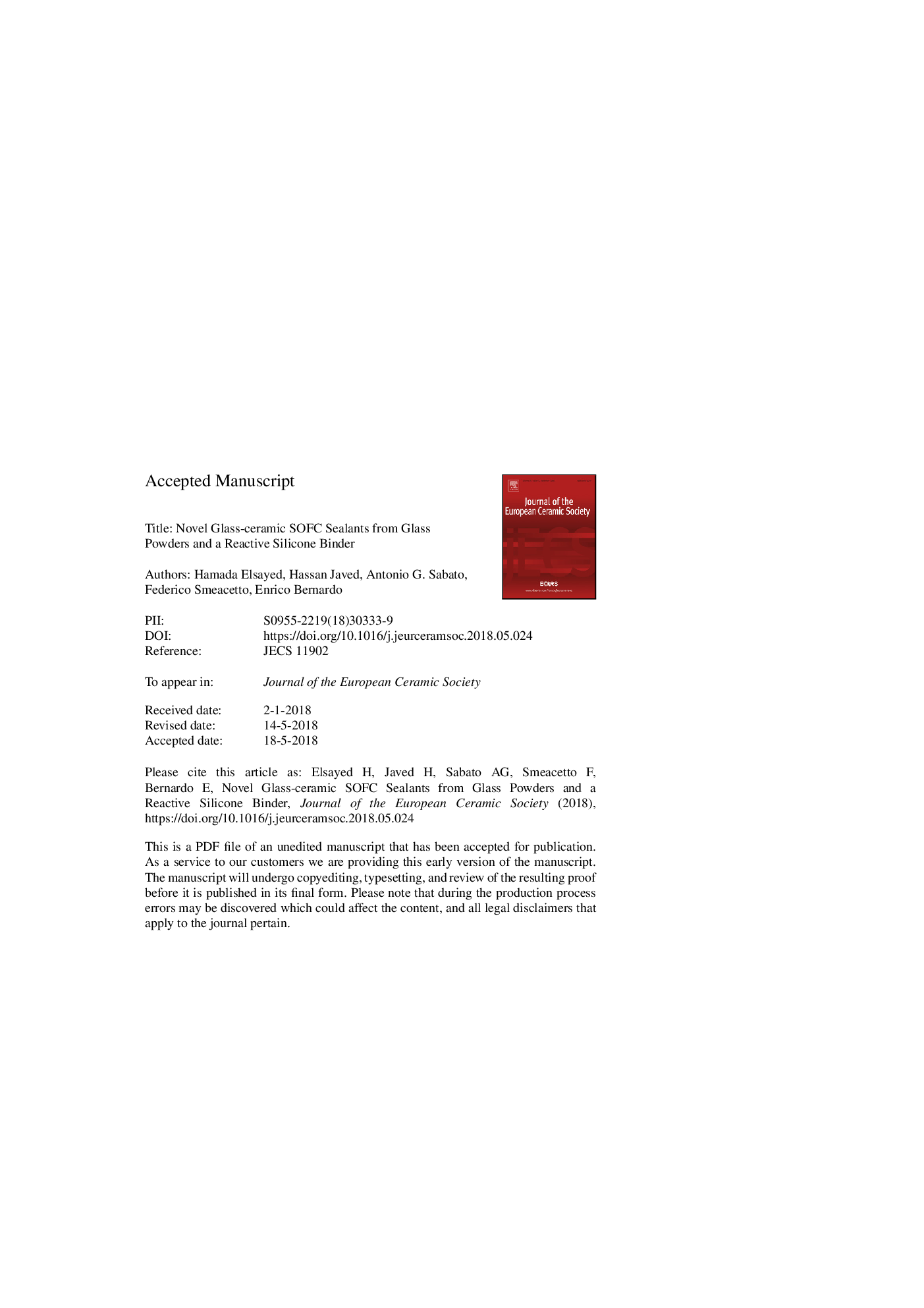| Article ID | Journal | Published Year | Pages | File Type |
|---|---|---|---|---|
| 7897824 | Journal of the European Ceramic Society | 2018 | 19 Pages |
Abstract
The processing of sintered ceramics is often conditioned by the debinding step. The binders may determine some defects in the final product directly, by causing some gas evolution even at an advanced state of densification, due to incomplete decomposition at low temperature, or indirectly, by offering poor adhesion between particles, so that 'green' compacts may be easily damaged. The present investigation is aimed at exploring a novel concept for sintered glass-ceramics, based on the adoption of a silicone polymer as reacting binder, providing an abundant ceramic residue after firing. A glass belonging to the CaO-MgO-Al2O3-SiO2 system, already studied as a sealant in solid oxide fuel cell (SOFC) planar stack design, was reproduced in form of 'silica-defective' variants, featuring a SiO2 content, in the overall formulation, reduced up to 15â¯wt%. The overall silica content was recovered by mixing powders of the new glasses with the silicone: upon firing in air, the interaction between glass powders and polymer-derived silica led to glass-ceramics with the same phase assemblage than that formed by the reference glass and with a CTE of 9.5â¯Ãâ¯10â6 K-1. The new approach has been successfully applied to the manufacturing of glass-ceramic seals as joining materials for solid oxide cells.
Related Topics
Physical Sciences and Engineering
Materials Science
Ceramics and Composites
Authors
Hamada Elsayed, Hassan Javed, Antonio G. Sabato, Federico Smeacetto, Enrico Bernardo,
